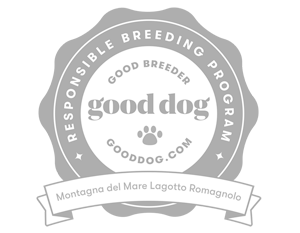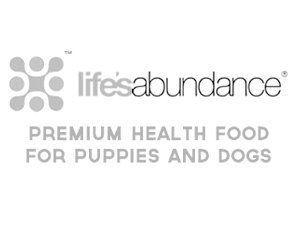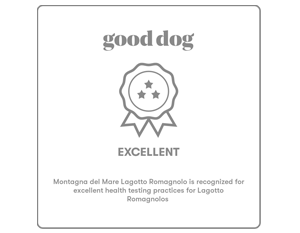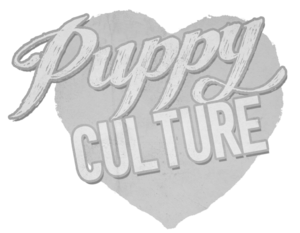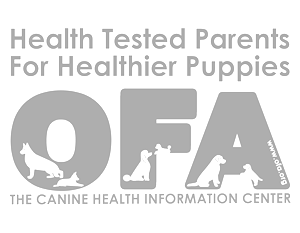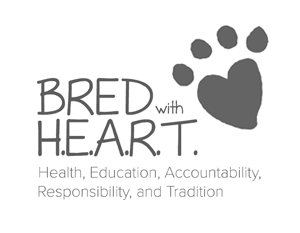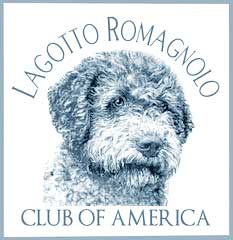One Veterinarian’s Opinion
© 2005 Chris Zink DVM, PhD, DACVP, DACVSMR
Extensively revised and updated -2013
Canine Sports Productions -www.caninesports.com
Those of us with responsibility for the health of canine athletes need to continually read and evaluate new scientific studies to ensure that we are taking the most appropriate care of our performance dogs. This article reviews scientific evidence that, taken together, suggests that veterinarians and owners working with canine athletes should revisit the current standard protocol in which all dogs that are not intended for breeding are spayed and neutered at or before 6 months of age. The results of a number of publications are briefly summarized in the areas of orthopedics, cancer, behavior, and other health considerations.
Orthopedic Considerations
- Bitches spayed at 7 weeks had significantly delayed closure of growth plates as compared to those spayed at 7 months, and those spayed at 7 months had significantly delayed closure of growth plates as compared to those left intact.(1)In a study of 1444 Golden Retrievers, bitches and dogs spayed or neutered at less than a year of age were significantly taller than those spayed or neutered after a year of age.(2)
- In a study of 203 agility dogs, the author demonstrated that the tibia and radius and ulna were significantly longer than the femur and humerus, respectively, in dogs that were spayed or neutered at or prior to 8 months of age as compared to intact dogs.(M.C. Zink, unpublished data)
- Several studies have shown that spayed and neutered dogs have a significantly higher prevalence of CCL rupture(3–6), even when controlling for body size.(3)
- Dogs that were neutered atleast6 months prior to a diagnosis of hip dysplasia were 1.5 times more likely to develop hip dysplasia than sexually intact dogs.(7)
- Spayed/neutered dogs had 3.1 times higher incidence of patellar luxation.(8)
Discussion: Dogs that have been spayed or neutered at or before puberty can often be identified by their longer limbs, lighter bone structure, narrower chests and narrower skulls than intact dogs of the same breed. This differential growth frequently results in significant alterations in body proportions and particularly the lengths (and therefore weights) of certain bones relative to others. For example, if the femur has achieved its genetically determined normal length at 8 months, prior to a dog being spayed or neutered, but the tibia(which normally stops growing at 12 to 14 months of age)continues to elongate for several months after that point because of the removal of the sex hormones, then the relationship between the femur and tibia will be different than what was genetically determined. This may result in an abnormal angle at the stifle and a longer (and therefore heavier) tibia placing increased stress on the cranial cruciate ligament(of the knee or stifle joint). It is well known that spayed and neutered dogs are more likely to be overweight or obese than sexually intact dogs(9), and this can be a contributing factor to orthopedic diseases. Thus, keeping the spayed/neutered canine athlete lean can help mitigate the increased risk of orthopedic conditions.
Cancer Considerations
- Spayed females had more than 5times greater risk than intact bitches of developing cardiac hemangiosarcoma and neutered males had 1.6times higher risk than intact males had of developing cardiac hemangiosarcoma.(10)
- Spayed females had 2.2 times increased risk for developing splenic hemangiosarcoma.(11)
- Male and female Rottweilers that were neutered or spayed before a year of age had 3.8 and 3.1 times greater risk, respectively, of developing bone cancer than intact dogs.(12)In a second study,spayed/neutered dogs had a 2.2 times higher risk of developing bone cancer than intact dogs.(13)
- Neutered dogs had a 2.8 times greater risk for developing any prostate tumor than intact dogs.(14) Neutered dogs had a 4.3 times higher risk of developing prostate carcinoma.(15, 16)
- Neutered dogs had a 3.6 higher risk for developing transitional cell carcinoma of the bladder than intact dogs, and a 3 times greater risk of developing any bladder tumor.(14)Spayed/neutered dogs had more than 4 times greater risk for developing transitional cell carcinoma of the bladder than intact dogs.(17)
- In a survey of 2505 Vizslas, spayed or neutered dogs were found to have a significantly higher risk of mast cell cancer, hemangiosarcoma, lymphoma and all cancers together than intact dogs.(18
Discussion: One study indicated a slightly increased risk of mammary cancer in female dogs after one heat cycle (8% increase), greater risk with two heats (26% increase) and increased risk with each subsequent heat.(19)However, a recent systematic review of the publications that advocate neutering to reduce the risk of mammary tumors in dogs indicated that 9 of 13 reports had a high risk of bias and the remaining 4 had a moderate risk of bias. This study concluded that the evidence that neutering reduces the risk of mammary cancer is weak and do not constitute a sound basis for firm recommendations.(20) Additionally, at the time when several of these studies were conducted (late 1960s), it was found that incidence rates for all malignant neoplasms were 453.4/100,000 female dogs. Mammary tumors accounted for half of these tumors, or 198.8/100,000. Thus, the actual overall risk at that time of any bitch getting a mammary tumor was only 0.2%.(21)In any case, the figures for increased risk of mammary cancer must be compared with the 200 to 400% increased risk of other cancers in spayed females. While about 30% of mammary cancers are malignant(22), as in humans, when caught and surgically removed early, the prognosis is very good.(23) This is in comparison to the other cancers listed, such as hemangiosarcoma and bladder cancer, which are often fatal. Given the balance of cancer risks listed above, owners of canine athletes should strongly consider leaving the ovaries intact for at least two heat cycles. In addition, the veterinary field should be developing programs for regular examinations including imaging to facilitate early diagnosis of mammary cancer in all intact female dogs, as has been performed in women for decades.
Behavior Considerations
- Early age gonadectomy was associated with an increased incidence of noise phobias and undesirable sexual behaviors, such as mounting.(24)
- Significantly more behavioral problems in spayed and neutered bitches and dogs, with fearful behavior being most common in spayed bitches and aggression in neutered dogs.(25, 26)
- In a prospective study, German Shepherd Dogs spayed between 5-10 months of age had significantly increased reactivity.(27)
Discussion: A number of the early studies claiming to show positive behavioral effects of spay/neuter were significantly flawed. For example, one of the most often quoted publications to support improvements in behavior, particularly aggression,after gonadectomy does not actually provide any statistical analysis.Additionally, 88% of owners of dogs in this study stated that their reason for castrating the dog was to attempt to resolve an existing behavior problem. Owners were also surveyed regarding the dog’s behavior a mean of 27 months post-castration. These factors likely introduced a significant amount of bias.(28)Another performed statistical analysis but showed that the age when the dog was neutered was not correlated with the degree of improvement.(29)Most critically, neither of these two studies included a control group of intact dogs. One of the more important undesirable behavioral effects of spay/neuter for canine athletes was a finding of a significantly lowered energy level. This was shown in a study that was well controlled and examined over 3500 dogs.(26)
Other Health Considerations
- Female, and sometimes male, dogs that are spayed/neutered before puberty have an increased risk of urinary incontinence and it is more severe in bitches spayed earlier.(30-33)
- Spayed female dogs displayed a significantly higher risk or hypothyroidism when compared to intact females.(34) A health survey of several thousand Golden Retrievers showed that spayed or neutered dogs were more likely to develop hypothyroidism.(2)Neutered male and spayed female dogs had higher relative risks of developing hypothyroidism than intact females.(35)
- Neutered females had a 22 times increased risk of developing fatal acute pancreatitis(multivariate analysis) as compared to intact females.(36)
- Risk of adverse reactions to vaccines is 27 to 38% greater in neutered dogs as compared to intact.(37)
- In a study of female Rottweilers there was a strong positive association between retention of the ovaries and longevity.(38)
Summary
I have gathered these studies to show that the practice of routinely spaying or neutering every dog at or before the age of 6 months is not a black-and-white issue. Clearly more studies need to be undertaken to evaluate the effects of prepubertal spaying and neutering, particularly in canine athletes.After examining the risks and benefits, I have significant concerns with removal of the gonads in both males and females. It is clear that the gonads are not just important for reproduction, but play a critical role in growth, development and long-term health.
Preventing Procreation
If we leave the gonads intact, how can we prevent the production of unwanted dogs? For males, the obvious solution is to keep them away from bitches in heat. But if an owner needs more certainty that a dog will not be bred, the answer is to perform a vasectomy. One possible disadvantage is that vasectomy does not prevent some unwanted behaviors associated with males such as marking and humping. On the other hand, females and neutered males frequently participate in these behaviors too. Training is the most effective solution to these behaviors. Another potential issue is finding a veterinarian who can perform the procedure. Veterinary schools do not currently teach students how to perform vasectomies. However, the methodology has been described and any board-certified surgeon can learn the technique. For a list of veterinarians who will perform the technique, contact the author at mczink@caninesports.com.
In females, the issues are more complex, because having a bitch in heat is inconvenient and leaving the uterus intact substantially increases the risk of pyometra (a serious, potentially fatal uterine infection). One solution might be to perform a hysterectomy (removal of the uterus), leaving the ovaries intact. Unfortunately, the effects of this technique on female dogs have never been studied. It is not known whether these dogs would continue to ovulate and perhaps show behavioral changes, although it is likely that there would be no discharge. Further, dogs that have this surgery will have intact ovaries, so veterinarians would need to establish an effective monitoring system for early detection of mammary cancer in intact bitches, as is available for women. In addition, there is the possibility of the dog developing stump pyometra if small amounts of uterine tissue are left behind during the hysterectomy. My current recommendation for performance dogs is to have them go through at least two heat cycles before spaying. Perhaps in the future hormone replacement therapy will be available for spayed females, but little is known about that at this time.
For males with retained testicles, there is a logical solution, based on fact. A large prospective study showed that the incidence of testicular cancer in cryptorchid dogs was 12.7/1000 dog-years at risk.(39) In other words, if 100 dogs with retained testicles live to be 10 years old, approximately 13 of them will develop cancer in the retained testicle. The average age at which tumors develop in undescended testes is 8.7 years.(40) These tumors are commonly benign, though they can grow quite large. Based on this study, I recommend that dogs with retained testicles have surgery to remove the retained testicle some time during the first three years of life and at that time they have a vasectomy on the remaining spermatic cord. This solution allows the dog to have the benefit of its sex hormones, but prevents passing this likely genetic condition on to offspring. Most of all, it is important that we assess each dog and its living situation individually, weighing the risks and benefits of removal of the gonads. There is no single solution that fits every dog.
Acknowledgment: The author is grateful for excellent in-depth discussions with Samra Zelman on the literature regarding spaying and neutering and for her careful review of this article.
References
1. Salmeri KR, Bloomberg MS, Scruggs SL, Shille V.Gonadectomy in immature dogs: effects on skeletal, physical, and behavioral development. JAVMA 1991;198:1193-1203.
2. Glickman L, Glickman N, Thorpe R. The Golden Retriever Club of America National Health Survey 1998-1999. http://www.grca.org/healthsurvey.pdf
3. Slauterbeck JR, Pankratz K, Xu KT, Bozeman SC, Hardy DM. Canine ovariohysterectomy and orchiectomy increases the prevalence of ACL injury. Clin Orthop Relat Res. 2004;(429):301-5.
4. Whitehair JG, Vasseur PB, Willits NH. Epidemiology of cranial cruciate ligament rupture in dogs. JAVMA 1993;203:1016-1019.
5. Duerr FM, Duncan CG, Savicky RS, Park RD, Egger EL, Palmer RH. Risk factors for excessive tibial plateau angle in large-breed dogs with cranial cruciate ligament disease. JAVMA 2007;231:1688-91.
6. Duval JM, Budsberg SC, Flo GL, Sammarco JL. Breed, sex, and body weight as risk factors forrupture of the cranial cruciate ligament in young dogs. JAVMA 1999;215:811-814.
7. van Hagen MA, Ducro BJ, van den Broek J, Knol BW. Incidence, risk factors, and heritability estimates of hind limb lameness caused by hip dysplasia in a birth cohort of boxers. Am J Vet Res 2005;66:3071-2.
8. Vidoni B, Sommerfeld-Stur I, Eisenmenger E.Diagnostic and genetic aspects of patellar luxation in small and miniature breed dogs in Austria. EJCAP 2005;16:149-58.
9. Lund, E. M., Armstrong, P. J., Kirk, C. A., Klausner, J. S. Prevalence and risk factors for obesity in adult dogs from private US veterinary practices. Intern J Appl Res Vet med 2006;2:177-86.
10. Ware WA, Hopper DL. Cardiac tumors in dogs: 1982-1995. J Vet Intern Med 1999 13(2):95-103.
11. Prymak C, McKee LJ, Goldschmidt MH, Glickman LT.Epidemiologic, clinical, pathologic, and prognostic characteristics of splenic hemangiosarcoma and splenic hematoma in dogs: 217 cases (1985). JAVMA 1988;193:706-12.
12. Cooley DM, Beranek BC, Schlittler DL, Glickman NW, Glickman LT, Waters D. Endogenous gonadal hormone exposure and bone sarcoma risk. Cancer Epidemiol Biomarkers Prev. 2002 11(11):1434-40.
13. Ru G, Terracini B, Glickman LT. Host related risk factors for canine osteosarcoma. Vet J. 1998156(1):31-9.
14. Bryan JN, Keeler MR, Henry CJ, Bryan ME, Hahn AW, Caldwell CW. A population study of neutering status as a risk factor for canine prostate cancer. Prostate 2007;67:1174-81.
15. Teske E, Naan EC, van Dijk EM, Van Garderen E, Schalken JA. Canine prostate carcinoma: epidemiological evidence of an increased risk in castrated dogs. Mol Cell Endocrinol 2002;197:251-5.
16. Sorenmo KU, Goldschmidt M,Shofer F, Ferrocone J. Immunohistochemical characterization of canine prostatic carcinoma and correlation with castration status and castration time.Vet Comparative Oncology. 2003 Mar; 1 (1): 48.
17. Knapp DW, Glickman NW, Denicola DB, Bonney PL, Lin TL,Glickman LT. Naturally-occurring canine transitional cell carcinoma of the urinary bladder A relevant model of human invasive bladder cancer. Urol Oncol 2000;5:47-59.
18. Gibbons, T.A., Ruffini, L., & Rieger, R.H. (2009). The 2008 Vizsla Health Survey. West Chester, PA: West Chester Statistics Institutehttp://vcaweb.org/download/Vizsla-Health-Survey-Analysis_Final-V3.pdf
19. Schneider R, Dorn CR, Taylor DO. Factors influencing canine mammary cancer development and postsurgicalsurvival. J Natl Cancer Inst 1969;43:1249-61.
20. Beauvais W, Cardwell JM, Brodbelt DC. The effect of neutering on the risk of mammary tumours in dogs –a systematic review. J Small Anim Pract 2012;53:314-322.
21. Dorn CR, Taylor DO, Schneider R, Hibbard HH, Klauber MR. Survey of animal neoplasms in Alameda and Contra Costa Counties, California. II. Cancer morbidity in dogs and cats from Alameda County. J Natl Cancer Inst. 1968 Feb;40:307-18.
22. Misdorp W. Tumors of the Mammary Gland. In: Meuten DJ. Tumors in Domestic Animals. 4th Edn. Iowa State Press, Blackwell Publishing Company, Ames, Iowa, p. 575.
23. Lena L, De Andres PJ, Clemente M, Cuesta P, Perez-Alenza MD. Prognostic value of histological grading in noninflammatory canine mammary carcinomas in a prospective study with two-year follow-up: Relationship with clinical and histological characteristics. Vet Pathol 2012; June 11. [Epub ahead of print.]
24. Spain CV, Scarlett JM, Houpt KA. Long-term risks and benefits of early-age gonadectomy in dogs. JAVMA 2004;224:380-387.
25.Serpell JA. Measuring behavior and temperament in dogs. American Kennel Club Canine Health Foundation Biennial National Parent Club Canine Health Conference. 2005. St. Louis, MO. p. 46-8.
26. Duffy DL, Serpell JA. Non-reproductive effects of spaying and neutering on behavior in dogs. Proceedings of the Third International Symposium on Non-surgical Contraceptive Methods for Pet Population Control. 2006. http://www.acc-d.org/2006%20Symposium%20Docs/Session%20I.pdf
27. Kim HH, Yeon SC, Houpt KA, Lee HC, Chang HH, Lee HJ. Effects of ovariohysterectomy on reactivity in German Shepherd dogs. Vet J 2006;172:154-9.
28. Hopkins, S. G., Schubert, T. A., Hart, B. L. Castration of adult male dogs: effects on roaming, aggression, urine marking, and mounting. JAVMA 1976;168:1108-10.
29. Neilson JC, Eckstein RA, Hart BL. Effects of castration on problem behaviors in male dogs with 5eferences to age and duration of behaviors. JAVMA 1997;211:180-2.
30. Stocklin-Gautschi NM, Hassig M, Reichler IM, Hubler M, Arnold S. Therelationship of urinaryincontinence to early spaying in bitches. J. Reprod. Fertil. Suppl. 57:233-6, 2001.
31. Aaron A, Eggleton K, Power C, Holt PE. Urethral sphincter mechanism incompetence in male dogs: a retrospective analysis of 54 cases. Vet Rec 1996;139:542-6.
32. Thursfield MV. Association between urinary incontinence and spaying in bitches. Vet Rec. 1985;116:695.
33. Thrusfield MV, Hold PE, Muirhead RH. Acquired urinary incontinence in bitches: its incidence and relationship to neutering practices. J Small Anim Pract 1998;39:559-66.
34. Milne KL, Hayes HM Jr. Epidemiologic features of canine hypothyroidism. Cornell Vet. 1981;71:3-14.
35. Panciera DL. Hypothyroidism in dogs: 66 cases (1987-1992). JAVMA 1994;204:761-7.
36. Hess RS, Kass PH,Shofer FS, Can Winkle TJ, Washabau RJ. Evaluation of risk factors for fatal acute pancreatitis in dogs. JAVMA. 1999;214:46-51.
37. Moore GE, Guptill LF, Ward MP, Glickman NW, Faunt KK, Lewis HB, Glickman LT. Adverse events diagnosed within three days of vaccine administration in dogs. JAVMA 2005;227:1102-8.
38. Waters DJ, Kengeri SS, Clever B, Booth JA, Maras AH, Schlittler DL, Hayek MG. Exploring mechanisms of sex differences in longevity: lifetime ovary exposure and exceptional longevity in dogs. Aging Cell 2009;8:752-5.
39. Reif JS, Maquire TG, Kenny RM, Brodey RS. A cohort study of canine testicular neoplasia. JAVMA 1979;175:719-23.
40. Nieto JM, Pizarro M, Balaguer LM, Romano J. Canine testicular tumors in descended and cryptorchid testes. Dtsch Tierarztl Wochenschr. 1989;96:186-9.
Lagotto Romagnolo – Breed Standard
General Appearance Small to medium-sized dog, well proportioned, powerfully built, of a rustic appearance, with a dense, curly coat of woolly texture. The dog should give the impression that he has the strength and endurance to work all day in difficult and...
Early Spay Neuter: 3 Reasons To Reconsider
By Dana Scott The topic of spay/neuter is emotionally charged for many pet owners. It’s become the “responsible” thing to do and we commonly hear of the benefits of this surgery but rarely the risks. And when savvy pet owners avoid early spay/neuter (or forego it...
The Tail of the Short-Coat
A Breeders Story–by Therese Williams I am generally a well-planned and organized person. I like some order in my life, to some extent anyway. I have always been in management positions, so I must also like to have some degree of control (at least my husband tells me I...
Living with the Lagotto Romagnolo
Hey, what kind of dog is that?” “Thank you for asking, It is a Lagotto Romagnolo.” “A what? I thought it might be some kind of doodle.” These are the daily conversations of anyone that owns a Lagotto Romagnolo. A Little Histoy The Lagotto Romagnolo in fact, is a very...
How to Identify a Good Dog Breeder
Tips from The Humane Society of the United States Look for a breeder who at a minimum: Keeps her dogs in the home and as part of the family--not outside in kennel runs. Has dogs who appear happy and healthy, are excited to meet new people, and don't shy away from...
Upholding breed standards
Upholding breed standards Montagnadel Mare is a Lagotto Romagnolo kennel of the highest repute. Therese Williams is acutely aware of the importance of upholding breed standards for both health and temperament.A top of the line kennel is available for the dogs, but...
Lagotto Romagnolo pronounced:
lag-oh-toe roman-yolo
Puppy Culture Program
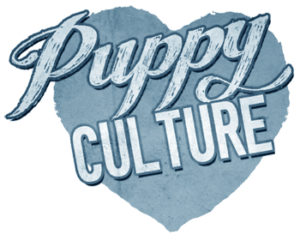
High-quality
Our puppies are raised in the home, are fed a high-quality diet and we follow the Puppy Culture Program for proper socialization and training.
Endorsements
